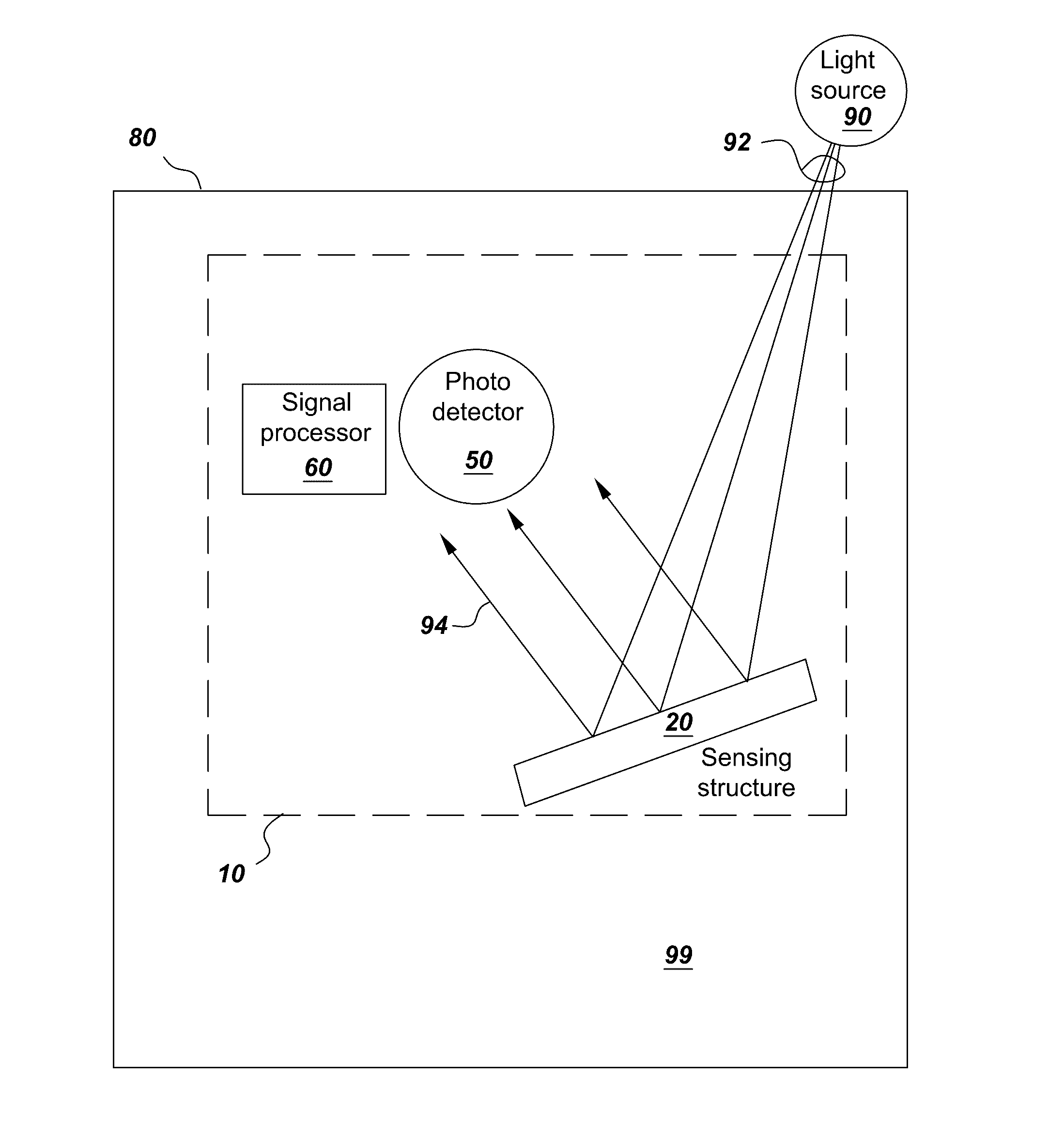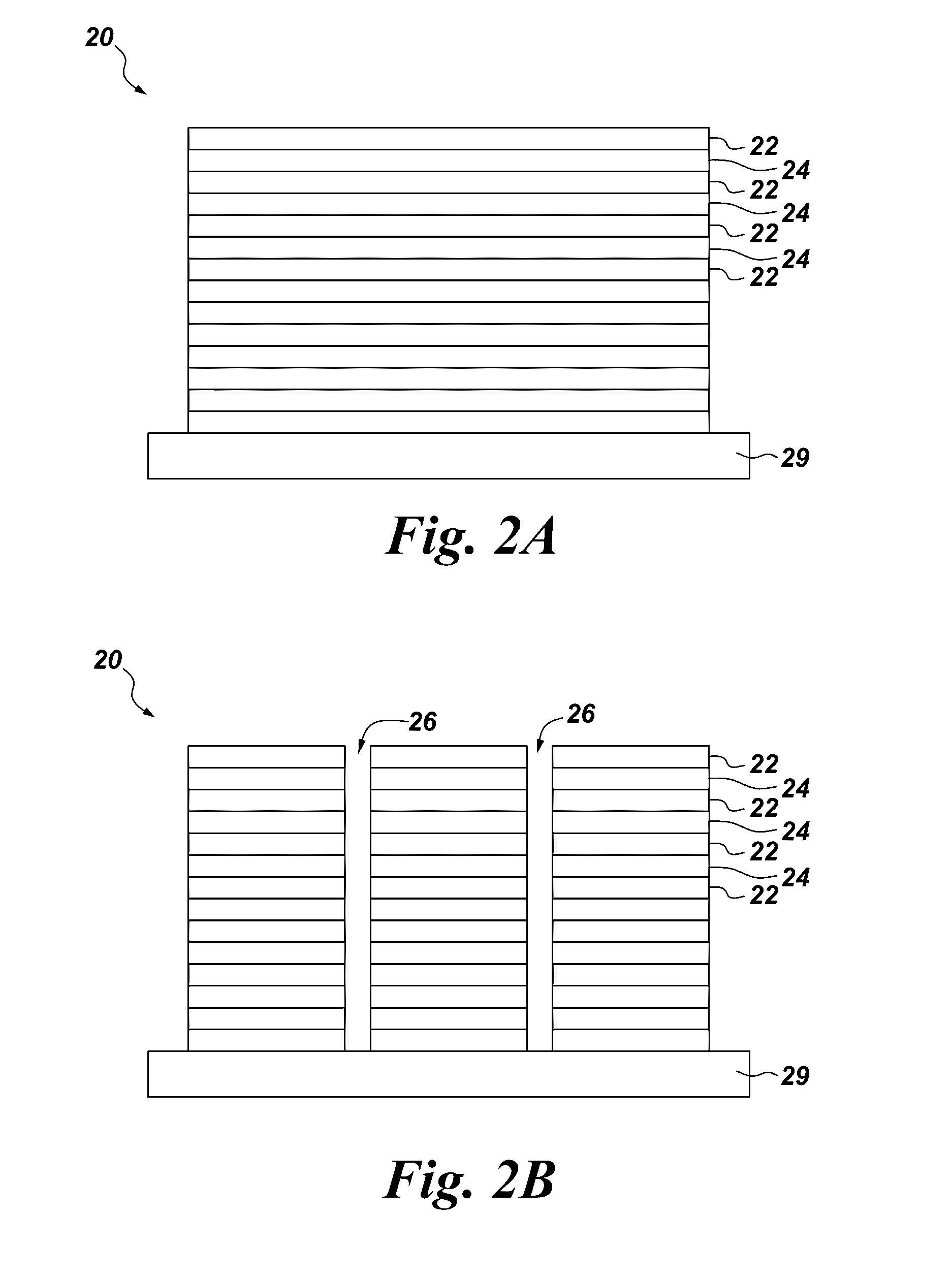Photonic sensor for in situ selective detection of components in a fluid
- Summary
- Abstract
- Description
- Claims
- Application Information
AI Technical Summary
Benefits of technology
Problems solved by technology
Method used
Image
Examples
examples
[0076]Design of a colorimetric sensor for selective detection of methane was demonstrated using two exemplary multilayer interferometric structures. These sensor structures contained five and ten interferometric layers and each layer had a small extinction coefficient of 0.02 and was sensitive to methane.
[0077]More specifically, a design of a methane sensor comprises an interferometric structure with five methane-sensitive layers, whereas a design of a methane sensor comprises an interferometric structure with ten methane-sensitive layers. Each of the layers is 207.1824 nm thick and are separated from each other by an air gap which is 100 nm thick. In this design, the width of the structure is at least 100 times larger than the thickness of the methane-sensitive layers or the air gap. The operating wavelengths for this photonic structure are in the visible spectral range.
[0078]An exemplary methane-sensing moiety (i.e. a cryptophane E) was implemented as a part of the resonant struct...
PUM
 Login to View More
Login to View More Abstract
Description
Claims
Application Information
 Login to View More
Login to View More - R&D
- Intellectual Property
- Life Sciences
- Materials
- Tech Scout
- Unparalleled Data Quality
- Higher Quality Content
- 60% Fewer Hallucinations
Browse by: Latest US Patents, China's latest patents, Technical Efficacy Thesaurus, Application Domain, Technology Topic, Popular Technical Reports.
© 2025 PatSnap. All rights reserved.Legal|Privacy policy|Modern Slavery Act Transparency Statement|Sitemap|About US| Contact US: help@patsnap.com



